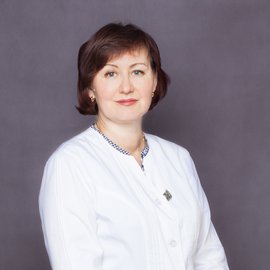The psychotherapist applies cognitive behavioural psychotherapy:
Cognitive behavioural psychotherapy is the most widely used type of psychotherapy upon anxiety disorders. This therapy is the most effective in treatment of panic disorders, phobias, social anxiety disorders and generalized anxiety disorder.
Cognitive behavioural psychotherapy addresses negative patterns and distortions through which we view the world and ourselves. As can be seen from the name, it implies two main components:
- Cognitive psychotherapy analyzes the way negative thoughts, or cognitions, affect the appearance of anxiety.
- Behavioural psychotherapy analyzes the way your behaviour and response to situations trigger anxiety.
Challenging anxious thoughts — in the language of cognitive psychotherapy it is called cognitive restructuring — is a process of your doubting the way of thinking that causes anxiety by replacing it with more positive, realistic thoughts. This implies three steps:
- Identification of negative thoughts. Patients with anxiety disorders consider situations more dangerous than they really are. One of the strategies is to ask yourself what your thoughts were when you first felt anxious.
- Challenging negative thinking. The psychotherapist teaches how to assess thoughts that cause anxiety. This means doubting the basis of your threatening thoughts, analyzing useless beliefs and verifying the reality of negative predictions.
- Replacement of negative thoughts with realistic ones. As soon as irrational forecasts and negative distortions in anxious thoughts are detected, it is possible to replace them with new thoughts that are more accurate and positive.
Cognitive behavioural psychotherapy may also include:
- Learning how to recognize anxiety.
- Training in stress handling and relaxation to eliminate anxiety and panic.
- Fear confrontation.
- During individual psychotherapy sessions the method of light-pulse therapy can be used.
Sleep disturbance is one of the most common symptoms of psychological distress. It may cause mental disorders (including neurosis, depression), functional mental disorders (in particular, in stress), as well as non-clinical psychological difficulties (for example, anxiety before an exam).
The most common sleep disturbances are difficulties in falling asleep, night awakening, early morning awakening.
Most often sleep disturbances are not an independent problem. They occur when, for one reason or another, a person can not release a day experience and think over it at night, instead of sleeping. This is caused by situations of durable mental tension related with stress, interpersonal conflicts or large and long-term workload, forced night work that disrupts sleep and wakefulness schedule.
Sleep disturbances accompany many disorders:
- neurosis and neurotic reactions (sleep disturbances most often include difficulties in falling asleep and night awakening);
- depression (mood disorders) (sleep disturbances most often include difficulties in falling asleep and especially early morning awakening. In case of the so-called “masked” depression, insomnia may be the only symptom of the disease);
- psychosomatic disorders;
- psychosis (including such a serious disease as schizophrenia) – sleep disturbances include difficulties in falling asleep;
- addictions (alcohol, drugs);
- disrupted sleep-wakefulness schedule, time zone syndrome, etc.
Chronic insomnia psychotherapy includes several directions:
1. Identification and elimination of the real cause of sleep disturbances.
2. Training in self-relaxation techniques. The brain should be given an opportunity to make the things clear in a calm state not only before bedtime.
3. Eliminate failure in falling asleep. Remove the "anchor" to the moment of falling asleep. Replace overexcitement with relaxation.
Cognitive behavioural psychotherapy upon sleep disturbances:
- Understanding dreams. To ensure the complete change of the state, it is necessary to consider and understand what circumstances affect a good sleep
- Cognitive control and psychotherapy. The method contributes to observation and elimination of any anxious thoughts, concerns that disturb the rest and sleep.
- Adjust the rest schedule. The limitation of bedtime contributes to fast falling asleep and awakening in a good mood.
- Inactive or passive falling asleep. If a person is worried that he/she can not sleep, that he/she has insomnia, this circumstance is really disturbing. Distract your thoughts, try to think about a different thing and relax.
- Stimulus control technique. This implies the removal of factors that hinder a good sleep.
- Hygiene of work and rest. This technique stipulates the elimination of factors that negatively affect a restful sleep.
- Sleep calendar. Execution of a sleep diary containing the duration of rest, time of falling asleep and awakening. The diary can solve sleep problems.
The treatment may include the use of the combination of several methods.
-
 Voronovo Sanatorium
Voronovo SanatoriumTarasova
Olga NikolaevnaPsychotherapist
